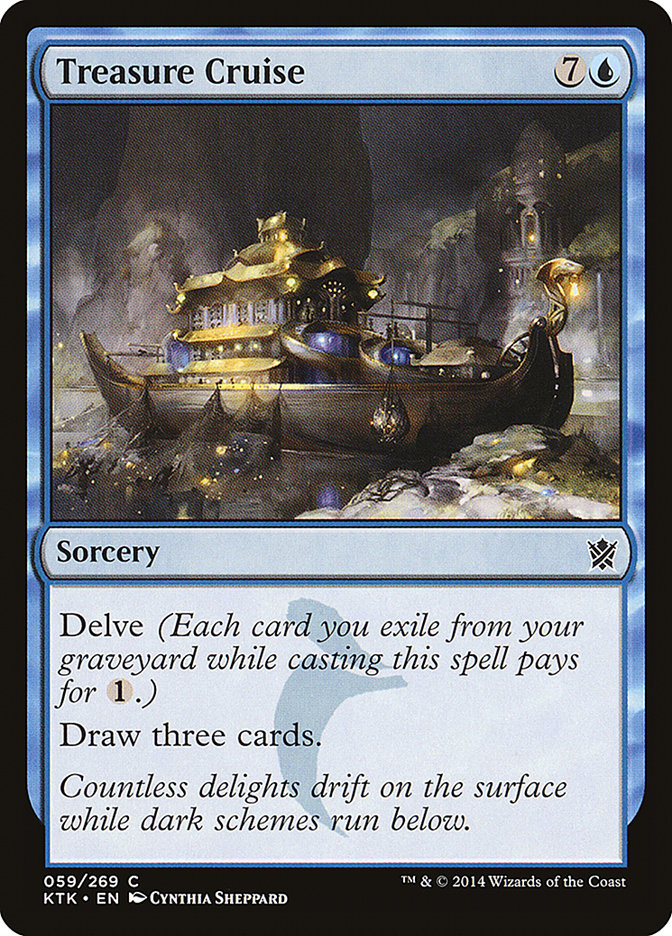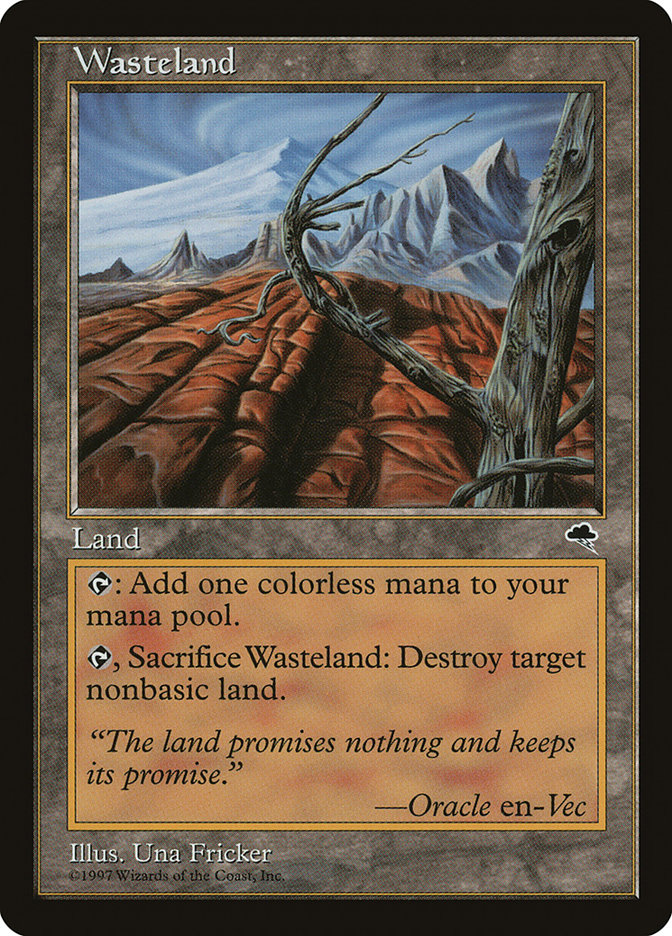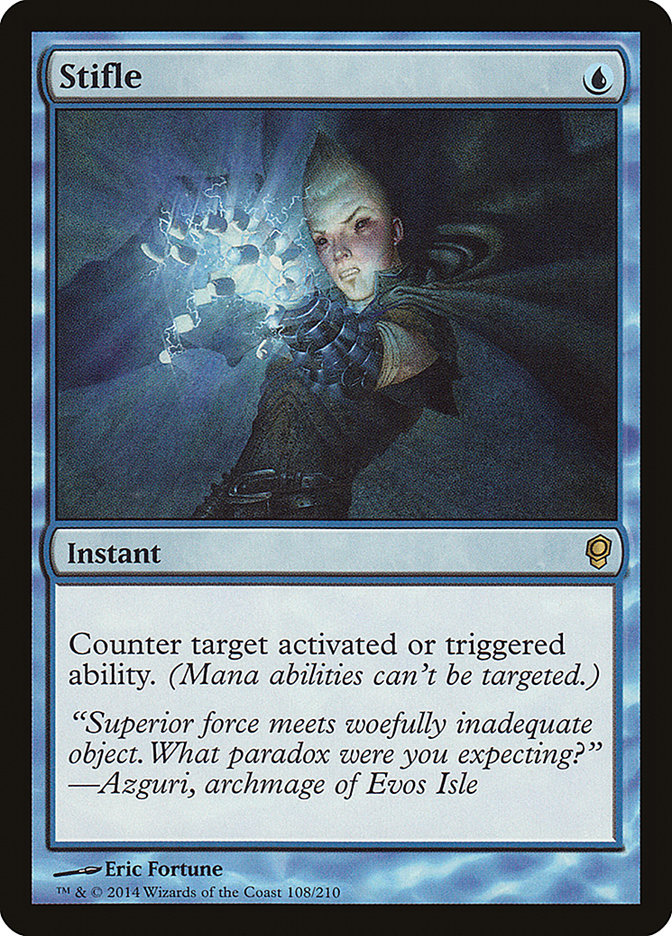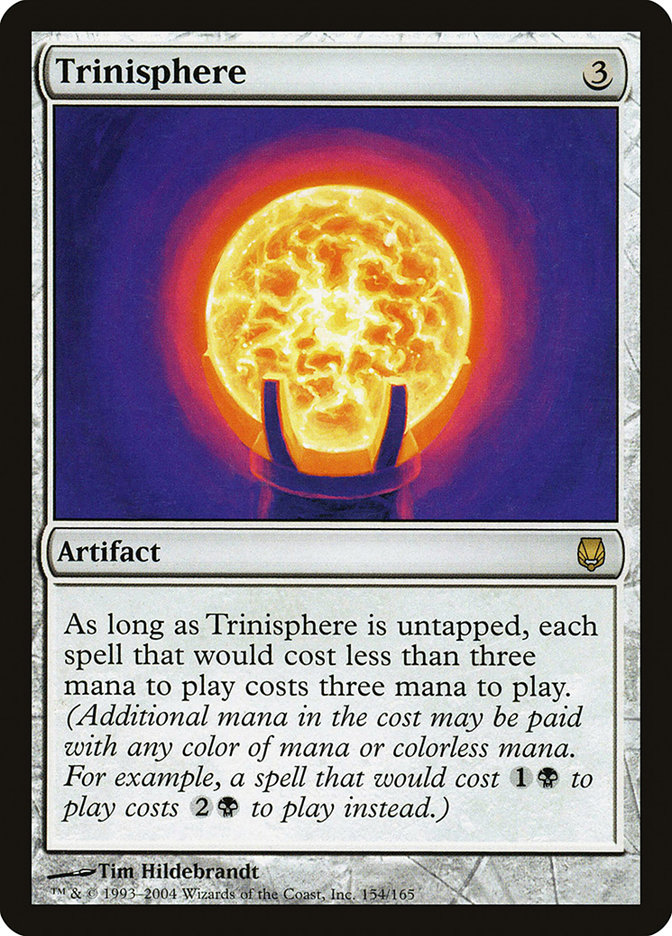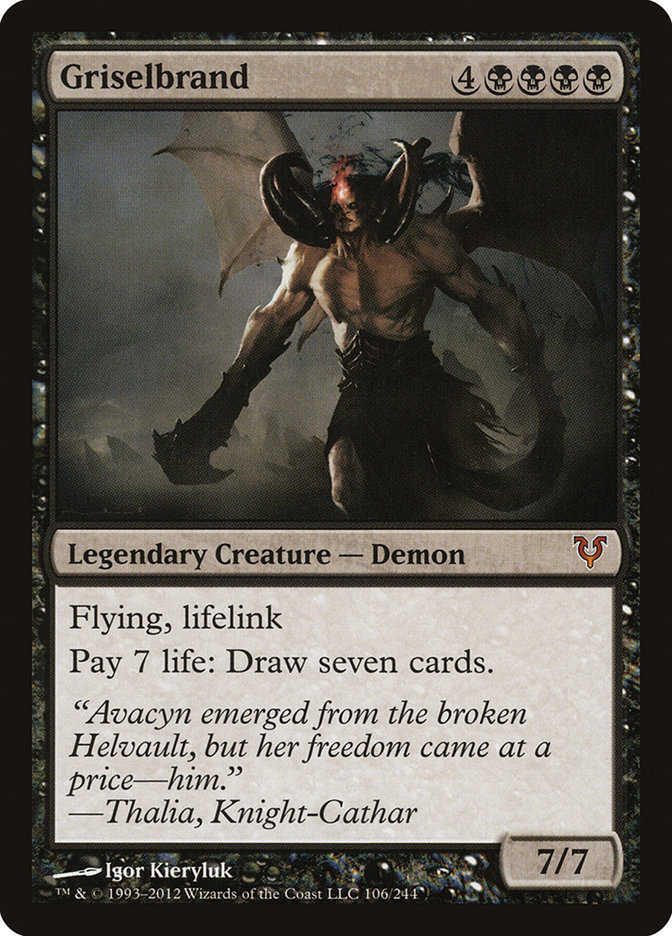We haven’t seen a big player like Treasure Cruise in a long time. Its influence across all formats has been so strong that people are questioning whether
it should be legal or not. Many predict its banning in Modern and possibly Legacy, perhaps even being put on the Vintage restricted list.
There has been much talk about the reasons that Treasure Cruise shouldn’t be allowed. Today I want to provide some contrary arguments to why Treasure
Cruise is good for Magic.
Treasure Cruise Has Reshaped Stale Environments
Modern, Legacy, and even Vintage have all had to adjust to the printing of Treasure Cruise, and I, for one, like to see big shifts take place now and then.
It’s not like Treasure Cruise gets all the credit either – Monastery Swiftspear, Dig Through Time, Jeskai Ascendency, Siege Rhino, and Anafenza, the
Foremost have all made significant impacts in Modern. I can’t remember the last time so many strong cards were all released from one set to shake things up
all the way down to Vintage. The Vintage Super League has seen people moving away from Gush to Treasure Cruises, making people rethink their broken,
decades-old strategies.
It Shines New Light on Banned Cards
Treasure Cruise has shaken up Modern to the point where some of the cards on the banned list look a lot more fair than they did when they were first put
there. Broodbraid Elf and Ancestral Visions spring to mind immediately.
Bloodbraid Elf was banned at a time when Jund was the dominant deck in Modern. But that elf wasn’t the real powerhouse – it was Deathrite Shaman.
Reasonable replacements to Bloodbraid Elf were found, including Huntmaster of the Fells and Olivia Voldaren. Now there’s Siege Rhino, which makes the
banned Bloodbraid Elf seem weak by comparison.
In the same way Deathrite Shaman was the real offender, I feel like Gitaxian Probe is doing the real work under the hood to power out Treasure Cruise.
Multiple Gitaxian Probe draws are some of the most broken openings that a U/R Delver deck can have, including making multiple Elemental tokens on turn 2
via Young Pyromancer or fueling a Treasure Cruise as early as turn 2. Manamorphose is a very similar card with the sole purpose to just “be a card,” not
particularly fixing the mana in Pyromancer Ascension, but rather hanging around enabling non-interactive and broken things.
I’d like to see how an Ancestral Visions + Bloodbraid Elf unbanning matches up with the power level of Treasure Cruise. I imagine it would be fair.
Does Treasure Cruise Really Only Cost One Mana?
Not really.
Treasure Cruise costs one like Serra Avenger or Talara’s Battalion cost two. Treasure Cruise situationally costs one mana and either takes work in the form
of Thought Scour, Gitaxian Probe, fetchlands and cantrips to enable early… or for the game to go long.
There was once a question: “How much life would you pay for Ancestral Recall to be fair?” The answers ranged from five to nine to nineteen, depending
mostly on how many times per game they felt casting it would be fair.
Currently in U/R Delver, the answer is something like five life and UU, split over a few turns. That’s pretty good but unlikely on turn 2. Some U/R Delver
builds are going deeper on Phyrexian mana spells like Gut Shot and Mutagenic Growth to go crazy filling their graveyard and triggering Young Pyromancer.
All it takes is one good Zoo or Burn list to give such an extreme take a reality check.
More Spells Played Per Game
Games of Standard are often played out with my 5-6 spells against your 5-6 spells. You play your best cards in order and let the chips fall where they may.
With less spells played in a game come more games won by “better draws.”
What’s so appealing to older formats is that many decks operate off fewer lands, which leads to more spells being played per player per game. What I liked
the most about Boss Sligh and its seventeen-land manabase is that even though my spells weren’t as strong as my opponent’s in the abstract, I was casting
more of them per game than them. This led to many branches of possible sequencing making it a difficult deck to pilot perfectly even though it looked very
simplistic at first glance.
The Treasure Cruise decks in Modern and Legacy will cast tons of spells per game and go very deep into their decks. This leads to more sideboard cards
drawn, more decisions to interact or develop your own board, and more chances to screw up sequencing. Personally, I’m a fan of seeing more things happening
per game.
Treasure Cruise is a Split Card
Treasure Cruise costs anywhere from one mana to eight mana. Any card that has different modes or casting cost options has usually benefited skilled
players. You can chose to cast Treasure Cruise on turn 4 while delving four, or wait a while if you want to cast it for cheaper and feel like you don’t
need the cards immediately. Treasure Cruise adds to the number of decisions made per game, which in turn, allows more depth for learning a deck or format.
Force of Will is great in Legacy for keeping the unfairness level in check, and the games that I’ve hardcast it without a blue card in hand are countless
at this point. Cards being useful at different stages of the game are a pleasure to have around.
Treasure Cruise Can Lose You Games
Drawing two in an opening hand can be a mulligan. I recall multiple times drawing another Treasure Cruise in the early turns and it being the worst
possible draw in my deck. I’ve lost many games with three uncastable Treasure Cruises in hand. There’s an unseen disadvantage to jamming too many Treasure
Cruises into a deck and to making poor mulligan decisions based on its hyped-up strength. Treasure Cruise is a good tool that has to be used correctly. At
the peak of Goblin Rabblemaster’s hype, it was being shoved into all sorts of decks that it didn’t belong in. Some people do that with Treasure Cruise as
well, and those who do get punished.
Sometimes it’s Just a Good Sideboard Card
Check out the Standard W/U Heroic sideboard:
Given time, I expect more decks in more formats to adapt Treasure Cruise as a sideboard card, and it’d be a shame to quash its deck design potential before
players can fully explore it. Treasure Cruise allows a deck like W/U Heroic to fight through a pile of removal from decks trying to attrition it out. I can
see Treasure Cruise being a nice sideboard option in Modern Zoo variants to fight effects like Supreme Verdict. This may lead to those control players
fighting your sideboard with their own long-game cards like Sphinx’s Revelation. This sort of leveling in sideboarding is something that really rewards
players for being on top of a metagame and for good deck design.
Here’s an example deck that would benefit from such a strategy in Modern:
Creatures (24)
- 1 Birds of Paradise
- 4 Tarmogoyf
- 4 Wild Nacatl
- 4 Noble Hierarch
- 2 Qasali Pridemage
- 2 Scavenging Ooze
- 3 Anafenza, the Foremost
- 4 Siege Rhino
Lands (22)
Spells (14)

Checks Design Space
Treasure Cruise currently limits the future design of cheap (or free) cantrips like Serum Visions, Ponder, Preordain, and Gitaxian Probe. But is limiting
that design space a bad thing? Treasure Cruise’s existence is a constant reminder that cantrips are generally too good and should avoid being printed. Even
Jeskai Ascendancy wouldn’t be a powerhouse in older formats if it weren’t for the cheap blue spells.
Ancestral Visions isn’t an unfair card. It was banned mainly because of Bloodbraid Elf and other cascade cards. Ancestral Visions was a bystander victim to
the ability to cast spells for free. The same is true about artifact lands. They’re completely fine if the Affinity keyword doesn’t exist. Anything that
can be cast for free should stay out of design for the sake of interactions being broken.
With Treasure Cruise running around, R&D at Wizards of the Coast will be sure not to print anything cheap that’s played as a card just for the sake of
casting it. Defiant Strike and Dragon’s Mantle are as close as we’ve gotten lately, and I think their power level is just right. Hopefully, Treasure Cruise
looming around keeps broken cantrips and other free mechanic effects to a bare minimum in the future.
Pushes out Wasteland and Stifle in Legacy
The old Legacy was full of Delver of Secrets decks aiming to get free wins off Wasteland + Stifle backed up by soft permission in Daze and Spell Pierce.
This led to many opponents not getting to play Magic at all. That style of game wasn’t very fun to play against.
Now Legacy players can’t count on such one-for-ones to be a primary gameplan when someone can catch back up with a timely Treasure Cruise. Even when really
far behind, you have a chance to make a comeback in the face of even the most oppressive draws. Treasure Cruise gives people hope and outs to wish for.
Some players may not like how opponents still have a remote chance of losing a lopsided game by a lucky topdeck. However, that’s what Magic’s all about – a
perfect blend of skill and variance. The pleasure of running good against small odds outweighs the pain of losing a big lead.
Pushes Out Dark Confidant
Dark Confidant has seen a decline in play in both Modern and Legacy ever since the printing of Treasure Cruise. One reason is that it’s extremely ambitious
to put both in the same deck and risk flipping Cruise over for eight damage. Another reason is the number of Forked Bolts running around. But the biggest
reason it that Treasure Cruise is simply a better way to gain card advantage.
But is that so bad? People that want card advantage will get it somehow whether Treasure Cruise is legal or not. Dark Confidant has always been a card
prone to many judge calls dealing with missed upkeep triggers. The ruling has been everything from a game loss, to reshuffling of the hand and taking
damage from a randomly revealed card, to the opponent optionally putting it on the stack. Honestly, I don’t know what the current ruling would be as I
haven’t seen it come up in a while. I also don’t miss dealing with it or hearing about it.
Dark Confidant led to some feel-bad situations from just normal play as well. An early one unchecked left people feeling helpless against its stream of
card advantage. The biggest groans came from both a string of free land flips and from flips of answers like Abrupt Decay that put the writing clearly on
the wall.
There were also the games that were unlosable except to a traitorous Bob. Having an opposing Dark Confidant as your only way to win is not the most
honorable path to victory, and hoping that someone’s cards work against them is something that we’ve fortunately haven’t had to see in a while.
Trinisphere and Chalice of the Void
More cards that are generally unfun to play against. Is it so bad that Treasure Cruise and its delve only cost one under Trinisphere? The Trinisphere sees
Treasure Cruise costing a real eight mana even though only one real mana was spent on it, thus bypassing the rule that “Trinisphere rules all.” Treasure
Cruise having a converted mana cost of eight gets past Chalice of the Void as well.
Is anyone really missing Trinisphere and Chalice of the Void in the local metagames? I expect the answer is no. Prison strategies aren’t fun for anyone
except the person playing them. Wizards of the Coast has come a long way in ensuring that new sets actually allow people to play Magic, and they have
really cut down on griefer/hoser cards. Any card that puts another nail in the coffin of prison cards is okay by me.
The Cries for Griselbrand to be Banned
When Griselbrand first started making a big stink in Legacy, there were screams that it was overpowered and should get the axe. A few weeks of it doing
unreal things had it looking nearly like a one-card combo. After all, if Necropotence and Yawgmoth’s Bargain are known as being a couple of the most broken
cards ever printed, how can Griselbrand be fair when it can come into play for only one black mana from Reanimate?
Since then, people have adapted and Griseldaddy is seen as just another Legacy card. I’m inclined to believe that the cries of Treasure Cruise being
overpowered follow the same vein of just being an early response to a card that’s not yet fully understood how to fight properly. Maybe you want to go
under it. Maybe you want to just deal with the cards that matter. Maybe you should be playing some Gaddock Teegs or Disdainful Strokes. The answers are
typically out there for a format to self-correct itself given enough people putting good, hard thought into doing so. I expect Pro Tour Fate Reforged to
breed some really great answers.
Why I Don’t Think Treasure Cruise Will Be Banned In Modern
It’s only been out for three months. Pro Tour Fate Reforged will have a set full of cards to work with. Treasure Cruise is strong, but inherent strength
doesn’t make a card bad. The inverse is also true. Shahrazad isn’t a particularly strong card and neither is Sensei’s Divining Top in Modern. They are,
however, bad cards for Magic, as they unreasonably extend the length of Magic games. Treasure Cruise is extending the length of games in a good way by
letting players see more cards and get deeper into their decks.
If I were in charge of the Modern banned list, these are the changes I’d make going into Pro Tour Fate Reforged:
Unban:
Ban:


